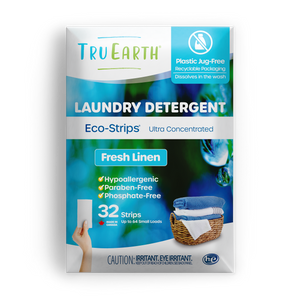Winter brings a picturesque snowy landscape but also the challenge of dealing with thick ice on driveways. As we navigate the frosty season, we must consider environmentally friendly methods for clearing ice without harming the planet. This guide will explore practical and eco-conscious ways to bid farewell to stubborn ice on your driveway.

The Environmental Impact of Traditional Ice Melt Products
It's important to recognize the environmental impact of traditional ice melt products. Conventional de-icers often contain harmful chemicals such as sodium chloride, calcium chloride, and potassium chloride.
When these chemicals melt ice, they can seep into the soil, contaminate water sources, and harm vegetation. Additionally, they pose a risk to pets and wildlife if ingested. Considering these drawbacks, it's worthwhile to explore greener alternatives.
Shoveling: The Old-Fashioned Yet Effective Approach
Good old-fashioned shoveling is one of the simplest and most environmentally friendly methods for dealing with thick ice. While it requires physical effort, shoveling effectively removes the top layer of snow and ice.
By manually clearing your driveway, you avoid using chemicals and get some refreshing exercise. Remember to use a sturdy shovel and pace yourself to prevent injuries.
Rock Salt Alternatives: Sand and Kitty Litter
When traction is the primary concern rather than melting the ice, sand, and kitty litter serve as excellent eco-friendly alternatives to rock salt.
These materials grip icy surfaces without introducing harmful substances into the environment. Simply spread a thin layer on the icy patches to enhance traction and make your driveway safer without compromising the planet's health.
Heated Mats: A Modern Solution with a Green Twist
For those seeking a high-tech approach, consider investing in heated mats designed for de-icing. These mats are placed on the driveway, generating heat to melt the ice.
While this method requires electricity, some heated mats are designed to be energy-efficient, and their long-term use can be more environmentally friendly than traditional ice melt products. Look for mats with adjustable temperature settings to optimize energy consumption.
DIY De-Icing Solutions: The Power of Household Ingredients
Harness the power of common household ingredients to create your eco-friendly de-icing solution. Mixtures of water and vinegar or water and rubbing alcohol can be sprayed onto icy surfaces to help melt the ice.
The lower freezing points of these liquids make them effective without the environmental concerns associated with commercial ice melt products. Experiment with different ratios to find the most effective solution for your conditions.
Beet Juice and Cheese Brine: Unusual Yet Effective De-Icing Agents
In some regions, unconventional but eco-friendly de-icing solutions are gaining popularity. Beet juice, cheese brine, and food-production byproducts have proven effective melting ice.
Beet juice contains sugars that lower the freezing point, while cheese brine, a salt-infused byproduct of cheese production, helps break the ice. These unique alternatives showcase the potential for creative and sustainable solutions.
Snow Melting Mats: A Smart and Eco-Friendly Investment
Consider snow-melting mats for a more advanced yet eco-friendly solution. These electrically powered mats are designed to melt snow and ice upon contact.
They can be installed in specific areas of your driveway or walkway, providing targeted de-icing without extensive coverage. Look for energy-efficient models and use them strategically to minimize environmental impact.
Preventive Measures: Stay Ahead of the Ice
Prevention is often the best strategy. Stay ahead of ice formation using a snow shovel to remove accumulated snow regularly before it hardens into thick ice.
Applying a thin layer of sand or another traction-enhancing material after each snow removal session can further reduce the likelihood of ice buildup. Addressing the issue early decreases the need for aggressive de-icing measures later on.
Maintaining Green Practices: Additional Tips
To maintain a green approach to ice removal, keep the following tips in mind:
- Limit chemical use: If you must use de-icing products, opt for environmentally friendly options with less harmful ingredients.
- Clear drainage areas: Ensure snowmelt has proper drainage to prevent runoff into sensitive areas.
- Use eco-friendly snow blowers: If using a snow blower, choose electric or battery-powered models instead of gas-powered ones.
- Regularly inspect your driveway: Monitor it for potential ice formation and address it promptly to avoid thicker accumulations.

A Green Path to Ice-Free Driveways
Tackling thick ice on your driveway doesn't have to harm the environment. Numerous eco-friendly alternatives exist, from manual shoveling to innovative heated mats.
By understanding the environmental impact of traditional ice melt products and exploring greener options, you can maintain a safe and ice-free driveway while preserving the planet's health. Embrace these eco-conscious practices, and let your winter maintenance efforts contribute to a sustainable and environmentally friendly approach to icy challenges.


